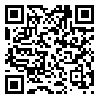Volume 6, Issue 1 (4-2013)
IJMEHM 2013, 6(1): 23-36 |
Back to browse issues page
Download citation:
BibTeX | RIS | EndNote | Medlars | ProCite | Reference Manager | RefWorks
Send citation to:



BibTeX | RIS | EndNote | Medlars | ProCite | Reference Manager | RefWorks
Send citation to:
Sadeghi H, Nosratian Ahoor M. Subject analysis of death. IJMEHM 2013; 6 (1) :23-36
URL: http://ijme.tums.ac.ir/article-1-5062-en.html
URL: http://ijme.tums.ac.ir/article-1-5062-en.html
1- University of Quran & Hadith, Qom, Iran
Abstract: (8688 Views)
Though there are different definitions for the word “mawt” (death), it seems that the most appropriate one would be the loss of power of the soul over the body, and that is when the soul is separated from the body. There are a variety of religious rulings for a human’s death in Islamic moral jurisprudence, and therefore it is necessary for a jurisprudent to have proper knowledge of the subject, reality, and the criterion for death and life. There are two main theories on the criterion for death and life from jurisprudential and moral perspectives. Some hold that everyone dies of cardiac arrest and others argue that man dies of brain death. It is also necessary to view the arguments presented by each group from jurisprudential and moral perspectives.
Advocates of the theory of cardiac arrest support their view through the following reasons: authority of established practice in concept analysis, incumbency of guarding the protected soul, principle of caution regarding people’s lives, and principle of istishab. Authors of the present paper have attempted to provide a critical analysis of the above-mentioned arguments in this study.
Advocates of the theory of brain death hold their view through the following reasons: the fetal heartbeat before the soul is breathed into it, possibility of cardiac transplantation and impossibility of brain transplantation, similarity between death and sleep, and signs and symptoms of death, among which two have been accepted: a) possibility of cardiac transplantation and impossibility of brain transplantation and b) signs and symptoms of death.
Type of Study: Research |
Received: 2013/06/18 | Accepted: 2013/07/6 | Published: 2013/07/6
Received: 2013/06/18 | Accepted: 2013/07/6 | Published: 2013/07/6
Send email to the article author
| Rights and permissions | |
 |
This work is licensed under a Creative Commons Attribution-NonCommercial 4.0 International License. |





